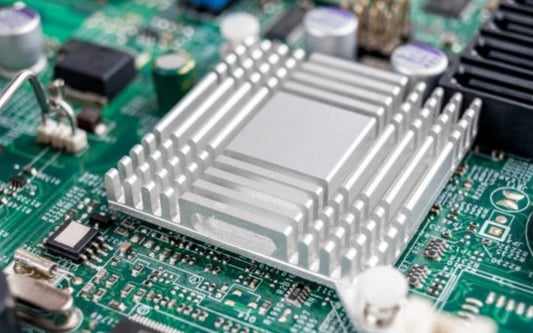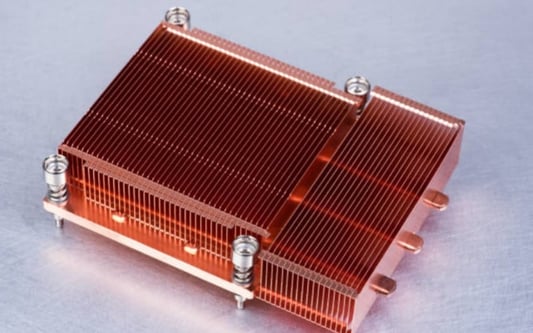The Significance of Heat Sinks in Electronic DevicesElectronic devices are an integral part of our daily lives, with advancements in technology constantly improving our experiences. However, as these devices become more powerful and compact, they also generate more heat. Heat is a natural byproduct of electronic components operating, and if not managed properly, it can lead to reduced performance, decreased lifespan, and even failures. One effective solution to dissipate heat and maintain optimal performance is through the use of heat sinks. In this article, we will explore the importance of heat sinks and why they are often required in electronic devices.Understanding Heat DissipationBefore delving into the necessity of heat sinks, it is crucial to understand the concept of heat dissipation. Heat dissipation refers to the process of transferring heat away from a heat source to prevent it from accumulating and causing damage. In electronic devices, heat is primarily generated by active components such as microprocessors, graphics cards, and power transistors. These components produce heat as a result of electrical resistance and the conversion of electrical energy into other forms, such as light or sound.What is a Heat Sink?A heat sink is a passive cooling device designed to absorb and dissipate heat away from electronic components. It typically consists of a thermally conductive material, such as aluminum or copper, with a large surface area that facilitates efficient heat transfer. The heat sink is attached to the heat-generating component, forming a thermal pathway that allows heat to flow from the component to the heat sink. Once in the heat sink, the heat is then dissipated into the surrounding environment through conduction, convection, and radiation.The Role of Heat SinksHeat sinks play a vital role in maintaining the temperature of electronic components within safe operating limits. By absorbing and dissipating heat, they prevent the components from overheating and ensure optimal performance. Heat sinks provide a pathway for heat to escape, allowing for efficient cooling and preventing the buildup of excessive heat. Without a heat sink, the heat generated by electronic components would accumulate, leading to thermal runaway and potential damage.Factors Affecting the Need for a Heat SinkThe requirement for a heat sink varies depending on several factors, including the power dissipation of the component, the ambient temperature, and the thermal characteristics of the device. Components that generate a higher amount of heat, such as high-performance processors or power amplifiers, generally require a heat sink to prevent overheating. Similarly, if the ambient temperature is high, the heat dissipation capacity of the device may be insufficient, necessitating the use of a heat sink.Enhancing Heat Sink PerformanceWhile heat sinks are effective cooling solutions, their performance can be further enhanced through various techniques. One commonly used method is the application of thermal interface materials (TIMs) between the component and the heat sink. TIMs, such as thermal paste or pads, improve heat transfer by filling microscopic air gaps and ensuring better contact between the surfaces. Additionally, heat sinks can incorporate features like fins, which increase the surface area for heat dissipation, or heat pipes, which enhance heat conduction efficiency.Types of Heat SinksHeat sinks come in various shapes and sizes, each designed for specific applications and thermal requirements. Some common types include passive heat sinks, active heat sinks, and liquid-cooled heat sinks. Passive heat sinks rely solely on natural convection to dissipate heat, while active heat sinks employ fans or blowers to enhance airflow. Liquid-cooled heat sinks, on the other hand, utilize a liquid coolant to absorb and carry away heat, offering even greater cooling efficiency.Heat Sink Design ConsiderationsWhen designing a heat sink for a specific application, several factors must be taken into account. These include the power dissipation of the component, the available space, the airflow conditions, and the target temperature. By carefully considering these factors, engineers can design a heat sink that optimizes heat dissipation and ensures reliable operation of the electronic device.Alternatives to Heat SinksWhile heat sinks are widely used and highly effective, there are alternative cooling methods available for certain applications. These include technologies such as heat pipes, thermoelectric coolers, and liquid cooling systems. These alternatives offer unique advantages and are often utilized when specific cooling requirements cannot be met by traditional heat sinks alone.In ConclusionIn the world of electronic devices, managing heat is crucial for maintaining optimal performance and preventing damage. Heat sinks are essential components that help dissipate heat and ensure the longevity of electronic components. By understanding the significance of heat sinks and their role in heat dissipation, we can appreciate their importance in keeping our devices cool and functioning optimally.Quote InquiryContact us!










